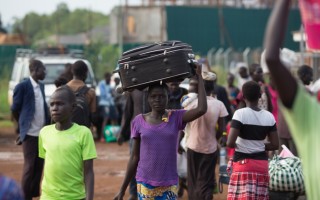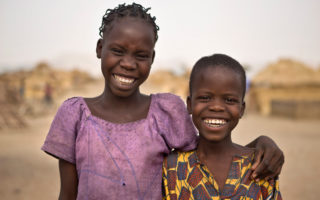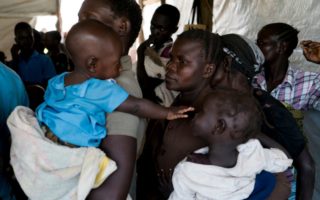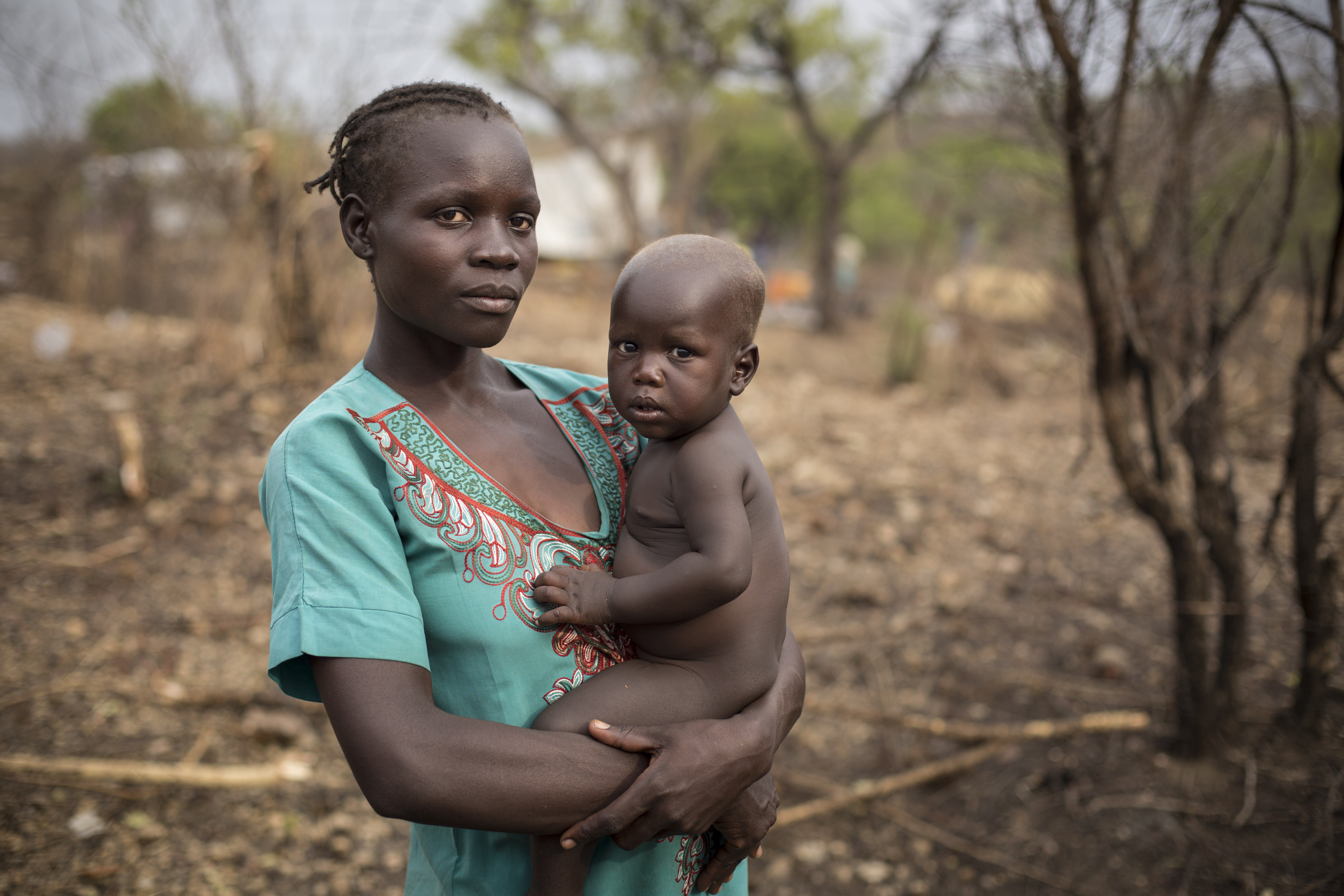
Ongoing conflict has led to a man-made famine in South Sudan. Hundreds of thousands of people are now fleeing not just violence, but starvation—South Sudan is now the largest refugee crisis in Africa.
How did we get here? Here’s a look back at some of the major events from the last three years that have led to where South Sudan is today.
December 2013: Outbreak of war
Two years after the creation of the world’s newest country, fighting breaks out in South Sudan between supporters of President Salva Kiir and supporters of former vice-president Riek Machar. Within the first week of fighting, over 1,000 people are killed and a further 100,000 are displaced from their homes.
January-February 2014: First ceasefire attempt
A ceasefire agreement is reached between Kirr and Machar’s supporters on January 23, but the deal is broken several times over the following weeks. Further attempts at peace negotiations throughout February fall apart and widespread violence in the country continues.
April 2014: Violence escalates
Hundreds of civilians are killed during an attack on the town of Bentiu by pro-Machar forces. Much of the town’s infrastructure is also destroyed.
In the five months since the beginning of the civil war, more than a million people have been displaced.
May-August 2014: Ceasefire rounds
Second and third ceasefire agreements are reached during this time, but the talks collapse and the ceasefires break almost immediately. In August, peace negotiations are renewed in Ethiopia.
February-March 2015: National unity collapses
Kiir and Machar sign a document in Addis Ababa, Ethiopia, agreeing to work towards a transitional government of national unity. Fighting breaks out and the peace negotiations fall apart once again.
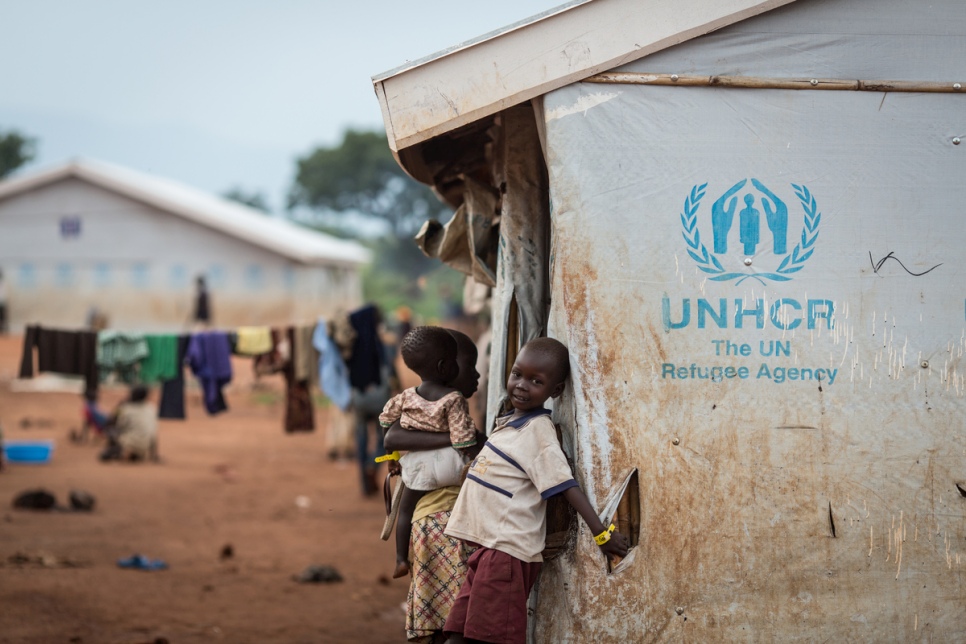
A young refugee from South Sudan at the Numanzi Transit Center where meals and temporary accommodation are provided by UNHCR in Adjumani, northern Uganda. © UNHCR /Will Swanson
December 2015: UNHCR scales up support
(Year-end figures) UNHCR builds 4,868 shelters in South Sudan and provides over 180,000 internally displaced persons (IDPs) with lifesaving emergency aid.
In Uganda, UNHCR provides 72 per cent of South Sudanese refugee families with adequate shelter, and 83 per cent or urban refugee children are enrolled in primary education.
April 2016: Peace on the horizon?
After months of negotiations, the Transitional Government of National Unity (TGoNU) is formed, with Kiir acting as president and Machar returned to his former role as vice-president.
July 2016: Attack in Juba
Violence erupts in the capital city of Juba and spreads throughout the country after an attack outside of a meeting between Kiir and Machar. More than 300 people are killed, while 26,000 flee to Uganda. Machar goes into exile and is replaced by Taban Deng Gai.
August 12, 2016: UN deploys protection forces
The UN Security Council adopts Resolution 2304, calling for the deployment of additional protection forces to the country to provide support to the ongoing United Nations Mission in South Sudan (UNMISS).
October-December 2016: Refugee numbers increase
By October, over 360,000 people have fled the country to escape the violence that broke out in Juba in July. Seventy per cent of these people seek refuge in neighbouring Uganda, while others seek refuge in other countries such as Ethiopia, Kenya, and Sudan.
In December the UN Security Council adopts Resolution 2327, extending the UNMISS mandate to December 15, 2017, and increasing the number of peacekeepers in the country to 17,000, alongside 4,000 Regional Protection Forces and 2,100 international police officers.
December 23, 2016: Refugees top 1 million
The number of refugees and displaced people from South Sudan has now reached 1,291,323, according to UNHCR’s latest count. A large percentage of these refugees are women and children under the age of 18. Many of these children have lost one or both of their parents to the war.
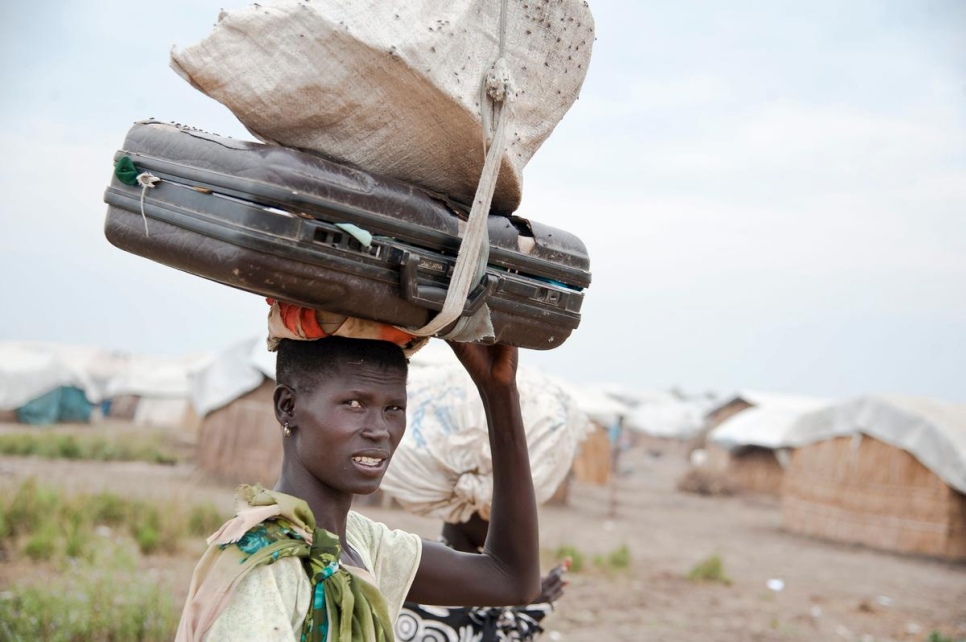
Nyakong, 22, fled fighting in South Sudan in 2014 and crossed the border to Ethiopia. “I left my children at home so that I could search for food,” she says. “They can’t walk here as the area is full of water and I can’t afford the boat.” © UNHCR/Catianne Tijerina
January 2017: UNHCR ramps up aid efforts
UNHCR plans to distribute core relief items (CRIs) to 50,000 internally displaced households in 2017, while providing direct support to 15,700 displaced people. UNHCR also plans to provide primary school education for 90 per cent of South Sudanese refugee children, and provide 80 per cent of households with individual latrines.
In Ethiopia, which is currently home to a large number of South Sudanese refugees, UNHCR plans to achieve a 65 per cent enrollment rate for school-aged refugee children from South Sudan by December 2017.
March 2017: Famine declared in South Sudan
Famine is declared by the United Nations in South Sudan. Total displacement from South Sudan into the surrounding region has now reached 1.6 million people, an astonishingly high percentage of the country’s former total population of some 11 million. Thousands of refugees are arriving from South Sudan to Uganda every day in March. UNHCR and the Government of Uganda release a statement saying that the country is at “breaking point” and that urgent aid is desperately needed.
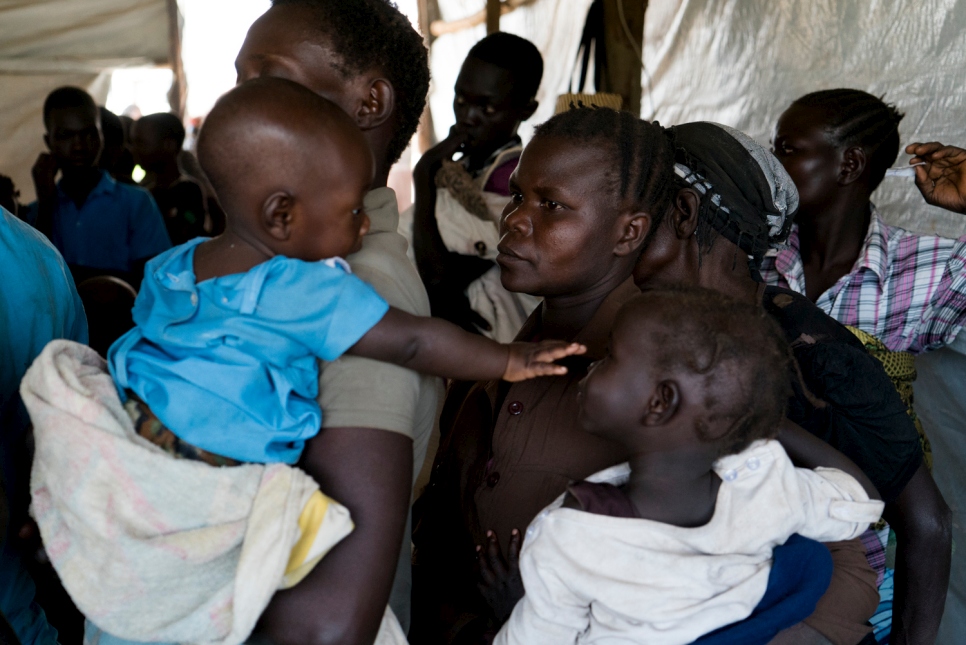
Sidah Hawa queues with her children at Kuluba transit centre to get registered and have her children vaccinated. © UNHCR/Michele Sibiloni
Where Are We Now?
After three years of fighting and several failed peace deals, South Sudan remains embroiled in a deadly civil war. While the capital city of Juba has returned to a state of relative stability after the July 2016 fighting, outbreaks of violence and reports of human rights violations continue across the country.
With the declaration of famine in March 2017, hundreds of thousands more people have fled the country, with numbers increasing every day.
These people require ongoing access to food, water, medical assistance, shelter, and protection. Despite the threats in the region, UNHCR is present to respond to these needs and provide shelter, comfort, and hope to those who have been displaced by war.



